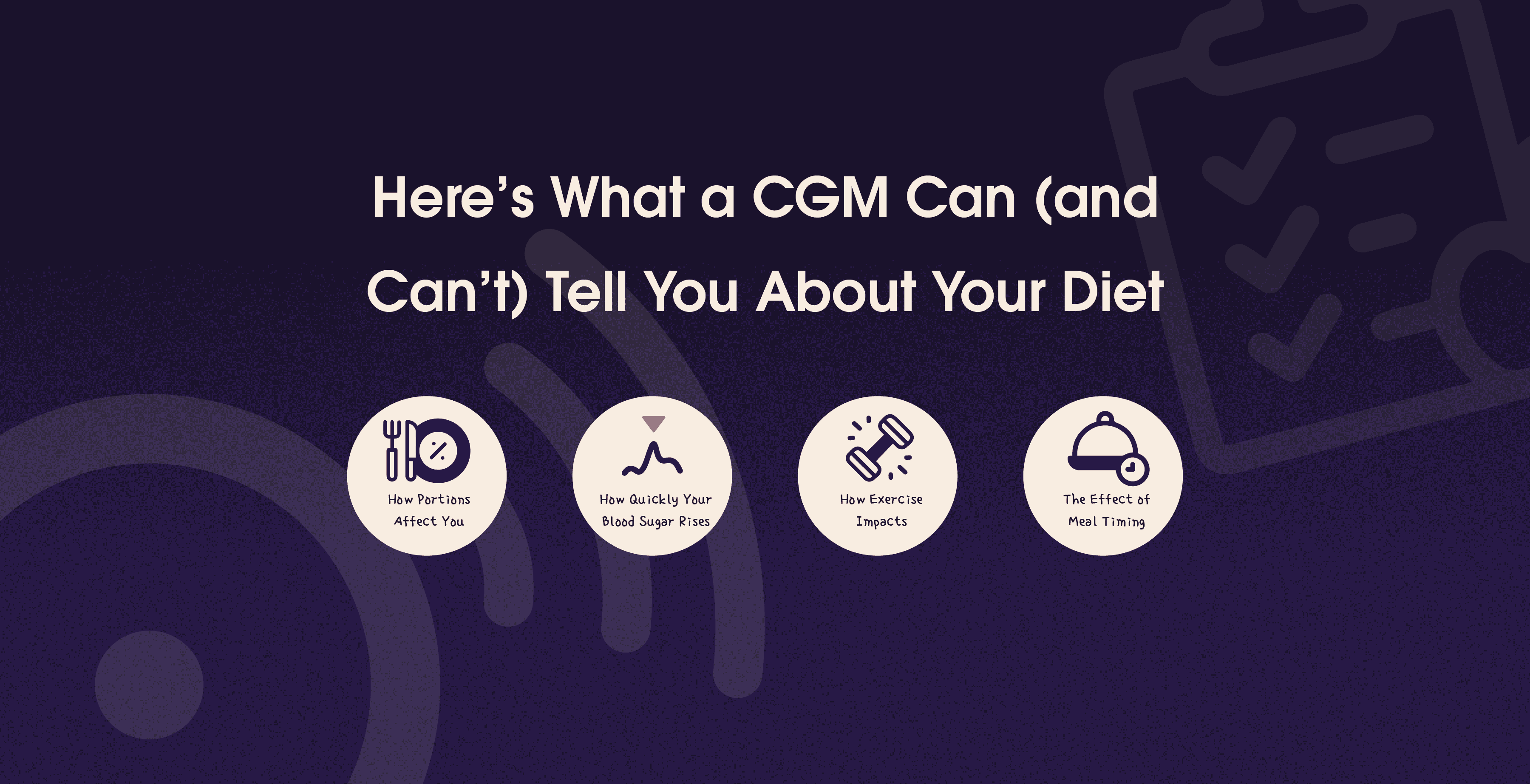What is a CGM?
Mar 10, 2024
Heer Chedda
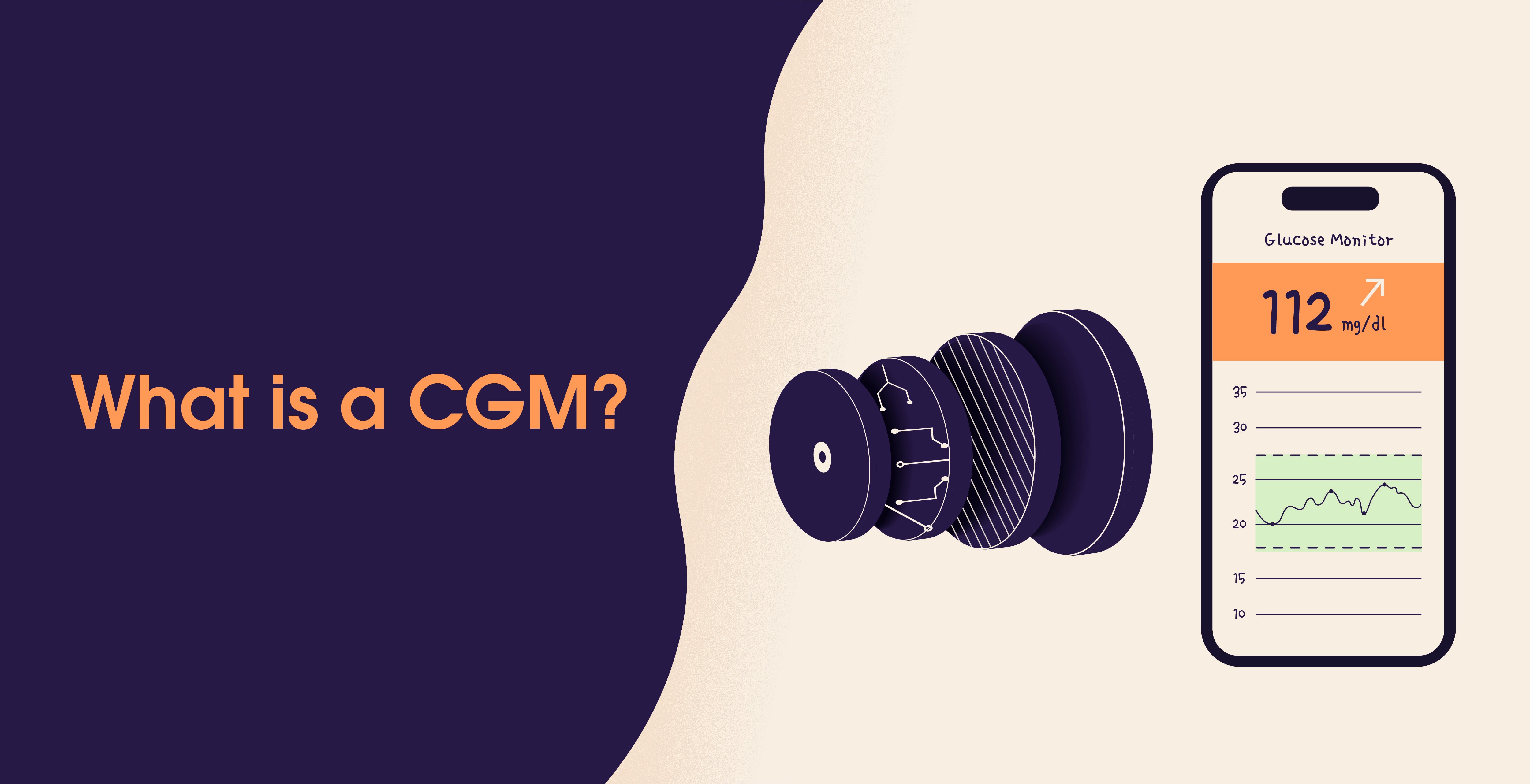


Table Of Contents
When it comes to managing your diabetes or prediabetes, keeping an eagle eye on your blood glucose (a.k.a. blood sugar) levels are majorly important.
Testing your blood seems like a total pain! Although, monitoring your levels helps you maintain healthy blood sugar, feel good now, and prevent future complications.
Highlights
Continuous glucose monitoring (CGM) devices utilize advanced technology to automatically measure blood sugar levels through a sensor implanted under the skin.
CGMs provide real-time, 24/7 data on glucose fluctuations, giving more insights than periodic finger stick readings.
Inserting the CGM sensor is swift and virtually painless. It remains embedded for up to 2 weeks before requiring replacement.
Potential issues to consider include inaccuracies, data lags, algorithm errors, dislodging, skin irritation, alarm fatigue, expenses, and technical glitches. However, most conclude the advantages outweigh the risks.
What Is Continuous Glucose Monitoring?
CGM is a diabetes technology that helps people with diabetes monitor their blood glucose levels day and night.
CGM removes the need for regular finger pricks. It uses a small sensor under the skin to measure glucose levels automatically every few minutes.
Traditional glucose monitoring involves pricking your finger with a small needle called a lancet, to get a drop of blood. You place the blood on a test strip that enters a glucose meter. This portable little machine gives you a reading of your blood sugar level at that moment.
Nowadays, there are devices called continuous glucose monitors (CGMs). These devices can track your glucose levels automatically. They place a sensor under your skin. The CGM sensor contains electrodes that generate a small electrical current proportional to interstitial glucose levels.
The current is transmitted wirelessly to a receiver/monitor that displays the glucose readings in real-time.
Note: CGMs are high-tech and can be expensive, so check with your insurance.
Your doctor sets optimal ranges that may be different for people with diabetes. Values above the normal range indicate hyperglycemia (high blood sugar) while values below indicate hypoglycemia (low blood sugar).
Monitoring frequency depends on your diabetes management plan. Most people check glucose levels:
Upon waking and before bed
Before meals
1-2 hours after start of meals
Before, during, and after exercise
Before driving
Anytime you have
symptoms of high or low blood sugar
How does a continuous glucose monitor work?
CGMs provide a more complete picture of your glucose fluctuations on a daily basis. But how does this advanced technology actually work? CGMs use a small sensor under the skin to check glucose levels. They also have a transmitter and monitor to show and track the readings.
A CGM has three main parts that work together to keep an eye on your blood sugar 24/7.
First, you insert a tiny sensor just under the skin, usually on your belly or arm. This sensor measures glucose levels in the fluid between your cells called interstitial fluid. It contains tiny electrodes that react with the glucose and generate a small electrical current.
Next, there's a transmitter. This disc-shaped device snaps onto the sensor and captures the electrical signal from those electrodes. It uses a radio frequency to send the current glucose data to the CGM monitor.
This is the component you interact with directly to see your glucose readings, trends and track patterns. It is a wireless handheld device integrated right into your smartphone.
Here's the cool part - the sensor tests and transmits your interstitial glucose level every 5 minutes or so.
The CGM receiver collects up to 288 readings per day! Way more data points than you'd get from occasional finger stick tests.
What are the benefits of a continuous glucose monitor?
Constantly having to stop and prick your finger for blood sugar readings is a pain you did not sign up for.
For one, CGMs eliminate the need for routine finger pricking. The sensor just sits below your skin and measures glucose levels automatically every few minutes. Way more convenient!
But beyond sparing your fingers, CGMs give you a complete 24/7 picture of your glucose levels. Standard meters only give you periodic snapshots. A CGM tracks trends and fluctuations throughout the entire day and night.
This provides valuable insights into how food, exercise, medication and other factors impact you. Having that real-time data and seeing the full picture enables tighter control.
Plus, CGMs can alert you when your blood sugar is starting to get too high or too low. Like getting an early warning system! This allows you to act before your glucose gets out of range.
According to studies, using CGMs improves Hba1c levels for many with diabetes. This reduces complications down the road.
Here's how you continuous glucose monitor is inserted
First, the doctor will clean and numb the spot on your belly or arm where they will place the sensor. Most sensors go on the back of the upper arm.
Next comes the insertion. Your doctor uses an insertion device that places the tiny sensor filament just under the surface of your skin. The filament contains electrodes that measure glucose levels in the interstitial fluid between your cells.
Insertion only takes a few seconds and is nearly pain-free thanks to the numbing medication. It's like putting in an IV line. The filament is extremely flexible and thin - about the thickness of a couple of human hairs!
Once you place the sensor under your skin, it remains there for a week or two before you need to replace it with a new one. The transmitter component snaps onto the top of the sensor like a watch face attached to a wristband. It provides security but you can easily remove it when you need to change the sensor.
The sensor measures your glucose levels. It sends the readings wirelessly to a device. No more finger pricks required for routine testing!
But before you go ahead and purchase a CGM, you should be aware of the risks of having a blood glucose monitor.
Problems with using a CGM
It's a good idea to talk to your healthcare provider before getting one to avoid possible problems.
Sensor inaccuracy - The interstitial fluid readings can sometimes differ from blood glucose levels. Variables like rapid glucose fluctuations or dehydration can cause discrepancies between CGM and fingerstick readings.
Data delay - The data on a CGM showing blood glucose levels are delayed by 5-10 minutes compared to the actual levels. Keep this in mind when treating or making decisions based on readings.
Algorithm inaccuracies - The mathematical formulas used to convert sensor signals to glucose values are not foolproof. In rare cases, they may interpret levels incorrectly.
Sensor dislodgement - Improper sensor insertion or catching the sensor on clothing can cause dislodgement, requiring early replacement. Using tape or adhesive can help secure it.
Skin irritation - The adhesive may cause skin reactions in some users, requiring repositioning or the use of inserts to avoid this.
Alarm fatigue - Frequent alarms, especially at night, can desensitize users and lead to ignoring or disabling the alarms. Customizing alarm parameters appropriately can help.
Cost - While prices vary, CGMs and supplies are expensive. Insurance coverage and personal budgets may limit access for some users.
Technical issues - Problems with the sensor, transmitter or receiver like battery failures, connectivity losses or data gaps can disrupt functionality. Having backup supplies helps.
The decision to use one is personal. CGMs have some technical quirks to master and financial hurdles to clear.
However, for many, the benefits drastically improve their ability to proactively manage diabetes with greater confidence and peace of mind. Embrace the data, customize those alarms, and let CGMs help you balance the highs and lows while staying focused on the big picture - your health.
Frequently Asked Questions
1, Who can use a continuous glucose monitor?
Continuous blood glucose monitors are primarily recommended for people diagnosed with type 1 or type 2 diabetes who are actively managing their condition. CGMs may also benefit those with gestational diabetes or prediabetes. CGMs are not intended for people who have not exhibited impaired glucose metabolism.
What are the different types of continuous glucose monitors?
The main categories of continuous glucose monitors (CGMs) are real-time, which provide current glucose readings frequently, and intermittently scanned, which store data to be checked periodically. Within these groups, options include implantable sensors, smart CGMs that connect to phones and watches, disposable single-use sensors, and closed-loop systems that automate insulin delivery. The variety of CGM options allows for features like real-time tracking, custom alerts, extended wear and integrated insulin control.
What is an artificial pancreas?
An artificial pancreas is a type of closed-loop automated insulin delivery system for people with diabetes. It consists of three components:
A continuous glucose monitor (CGM) measures blood sugar levels every few minutes via a subcutaneous (below the skin) sensor.
An insulin pump that delivers insulin as needed.
An algorithm that calculates insulin dosing based on the CGM glucose readings.
How does NIDDK support research on continuous glucose monitors?
The National Institute of Diabetes and Digestive and Kidney Diseases (NIDDK) supports research on continuous glucose monitors (CGMs) through funding initiatives and grants aimed at advancing CGM technology, improving accuracy, and enhancing usability.
Which CGM is the cheapest?
Some of the more affordable CGM options include systems like the Abbott FreeStyle Libre and the Dexcom G6. However, it's essential to consider not just the upfront cost of the device itself, but also ongoing expenses related to sensors and transmitters, as these are typically required for continuous monitoring.
Is inserting CGM painful?
Some users report feeling a slight sting during insertion, similar to a finger prick for blood glucose testing. However, many individuals find the process relatively painless, especially with newer CGM models designed for easier insertion.
Who is eligible for CGM?
In general, people with type 1 diabetes, those with type 2 diabetes who require intensive insulin therapy, and individuals with gestational diabetes may be candidates for CGM use. Additionally, individuals who experience frequent hypoglycemia or have difficulty maintaining stable blood glucose levels despite traditional monitoring methods may also benefit from CGM. Insurance coverage and guidelines vary, but CGMs are often prescribed by healthcare providers for individuals who meet specific criteria, such as a history of hypoglycemia unawareness or difficulty achieving glycemic targets.
How much does CGM cost in India?
Generally, CGM systems in India can range from around INR 5,000 to INR 20,000 for the initial setup, which includes the reader or transmitter device and a certain number of sensors. Additionally, there are ongoing costs for replacement sensors, which typically need to be changed every 7 to 14 days, and these can range from INR 2,000 to INR 6,000 per sensor.
References
When it comes to managing your diabetes or prediabetes, keeping an eagle eye on your blood glucose (a.k.a. blood sugar) levels are majorly important.
Testing your blood seems like a total pain! Although, monitoring your levels helps you maintain healthy blood sugar, feel good now, and prevent future complications.
Highlights
Continuous glucose monitoring (CGM) devices utilize advanced technology to automatically measure blood sugar levels through a sensor implanted under the skin.
CGMs provide real-time, 24/7 data on glucose fluctuations, giving more insights than periodic finger stick readings.
Inserting the CGM sensor is swift and virtually painless. It remains embedded for up to 2 weeks before requiring replacement.
Potential issues to consider include inaccuracies, data lags, algorithm errors, dislodging, skin irritation, alarm fatigue, expenses, and technical glitches. However, most conclude the advantages outweigh the risks.
What Is Continuous Glucose Monitoring?
CGM is a diabetes technology that helps people with diabetes monitor their blood glucose levels day and night.
CGM removes the need for regular finger pricks. It uses a small sensor under the skin to measure glucose levels automatically every few minutes.
Traditional glucose monitoring involves pricking your finger with a small needle called a lancet, to get a drop of blood. You place the blood on a test strip that enters a glucose meter. This portable little machine gives you a reading of your blood sugar level at that moment.
Nowadays, there are devices called continuous glucose monitors (CGMs). These devices can track your glucose levels automatically. They place a sensor under your skin. The CGM sensor contains electrodes that generate a small electrical current proportional to interstitial glucose levels.
The current is transmitted wirelessly to a receiver/monitor that displays the glucose readings in real-time.
Note: CGMs are high-tech and can be expensive, so check with your insurance.
Your doctor sets optimal ranges that may be different for people with diabetes. Values above the normal range indicate hyperglycemia (high blood sugar) while values below indicate hypoglycemia (low blood sugar).
Monitoring frequency depends on your diabetes management plan. Most people check glucose levels:
Upon waking and before bed
Before meals
1-2 hours after start of meals
Before, during, and after exercise
Before driving
Anytime you have
symptoms of high or low blood sugar
How does a continuous glucose monitor work?
CGMs provide a more complete picture of your glucose fluctuations on a daily basis. But how does this advanced technology actually work? CGMs use a small sensor under the skin to check glucose levels. They also have a transmitter and monitor to show and track the readings.
A CGM has three main parts that work together to keep an eye on your blood sugar 24/7.
First, you insert a tiny sensor just under the skin, usually on your belly or arm. This sensor measures glucose levels in the fluid between your cells called interstitial fluid. It contains tiny electrodes that react with the glucose and generate a small electrical current.
Next, there's a transmitter. This disc-shaped device snaps onto the sensor and captures the electrical signal from those electrodes. It uses a radio frequency to send the current glucose data to the CGM monitor.
This is the component you interact with directly to see your glucose readings, trends and track patterns. It is a wireless handheld device integrated right into your smartphone.
Here's the cool part - the sensor tests and transmits your interstitial glucose level every 5 minutes or so.
The CGM receiver collects up to 288 readings per day! Way more data points than you'd get from occasional finger stick tests.
What are the benefits of a continuous glucose monitor?
Constantly having to stop and prick your finger for blood sugar readings is a pain you did not sign up for.
For one, CGMs eliminate the need for routine finger pricking. The sensor just sits below your skin and measures glucose levels automatically every few minutes. Way more convenient!
But beyond sparing your fingers, CGMs give you a complete 24/7 picture of your glucose levels. Standard meters only give you periodic snapshots. A CGM tracks trends and fluctuations throughout the entire day and night.
This provides valuable insights into how food, exercise, medication and other factors impact you. Having that real-time data and seeing the full picture enables tighter control.
Plus, CGMs can alert you when your blood sugar is starting to get too high or too low. Like getting an early warning system! This allows you to act before your glucose gets out of range.
According to studies, using CGMs improves Hba1c levels for many with diabetes. This reduces complications down the road.
Here's how you continuous glucose monitor is inserted
First, the doctor will clean and numb the spot on your belly or arm where they will place the sensor. Most sensors go on the back of the upper arm.
Next comes the insertion. Your doctor uses an insertion device that places the tiny sensor filament just under the surface of your skin. The filament contains electrodes that measure glucose levels in the interstitial fluid between your cells.
Insertion only takes a few seconds and is nearly pain-free thanks to the numbing medication. It's like putting in an IV line. The filament is extremely flexible and thin - about the thickness of a couple of human hairs!
Once you place the sensor under your skin, it remains there for a week or two before you need to replace it with a new one. The transmitter component snaps onto the top of the sensor like a watch face attached to a wristband. It provides security but you can easily remove it when you need to change the sensor.
The sensor measures your glucose levels. It sends the readings wirelessly to a device. No more finger pricks required for routine testing!
But before you go ahead and purchase a CGM, you should be aware of the risks of having a blood glucose monitor.
Problems with using a CGM
It's a good idea to talk to your healthcare provider before getting one to avoid possible problems.
Sensor inaccuracy - The interstitial fluid readings can sometimes differ from blood glucose levels. Variables like rapid glucose fluctuations or dehydration can cause discrepancies between CGM and fingerstick readings.
Data delay - The data on a CGM showing blood glucose levels are delayed by 5-10 minutes compared to the actual levels. Keep this in mind when treating or making decisions based on readings.
Algorithm inaccuracies - The mathematical formulas used to convert sensor signals to glucose values are not foolproof. In rare cases, they may interpret levels incorrectly.
Sensor dislodgement - Improper sensor insertion or catching the sensor on clothing can cause dislodgement, requiring early replacement. Using tape or adhesive can help secure it.
Skin irritation - The adhesive may cause skin reactions in some users, requiring repositioning or the use of inserts to avoid this.
Alarm fatigue - Frequent alarms, especially at night, can desensitize users and lead to ignoring or disabling the alarms. Customizing alarm parameters appropriately can help.
Cost - While prices vary, CGMs and supplies are expensive. Insurance coverage and personal budgets may limit access for some users.
Technical issues - Problems with the sensor, transmitter or receiver like battery failures, connectivity losses or data gaps can disrupt functionality. Having backup supplies helps.
The decision to use one is personal. CGMs have some technical quirks to master and financial hurdles to clear.
However, for many, the benefits drastically improve their ability to proactively manage diabetes with greater confidence and peace of mind. Embrace the data, customize those alarms, and let CGMs help you balance the highs and lows while staying focused on the big picture - your health.
Frequently Asked Questions
1, Who can use a continuous glucose monitor?
Continuous blood glucose monitors are primarily recommended for people diagnosed with type 1 or type 2 diabetes who are actively managing their condition. CGMs may also benefit those with gestational diabetes or prediabetes. CGMs are not intended for people who have not exhibited impaired glucose metabolism.
What are the different types of continuous glucose monitors?
The main categories of continuous glucose monitors (CGMs) are real-time, which provide current glucose readings frequently, and intermittently scanned, which store data to be checked periodically. Within these groups, options include implantable sensors, smart CGMs that connect to phones and watches, disposable single-use sensors, and closed-loop systems that automate insulin delivery. The variety of CGM options allows for features like real-time tracking, custom alerts, extended wear and integrated insulin control.
What is an artificial pancreas?
An artificial pancreas is a type of closed-loop automated insulin delivery system for people with diabetes. It consists of three components:
A continuous glucose monitor (CGM) measures blood sugar levels every few minutes via a subcutaneous (below the skin) sensor.
An insulin pump that delivers insulin as needed.
An algorithm that calculates insulin dosing based on the CGM glucose readings.
How does NIDDK support research on continuous glucose monitors?
The National Institute of Diabetes and Digestive and Kidney Diseases (NIDDK) supports research on continuous glucose monitors (CGMs) through funding initiatives and grants aimed at advancing CGM technology, improving accuracy, and enhancing usability.
Which CGM is the cheapest?
Some of the more affordable CGM options include systems like the Abbott FreeStyle Libre and the Dexcom G6. However, it's essential to consider not just the upfront cost of the device itself, but also ongoing expenses related to sensors and transmitters, as these are typically required for continuous monitoring.
Is inserting CGM painful?
Some users report feeling a slight sting during insertion, similar to a finger prick for blood glucose testing. However, many individuals find the process relatively painless, especially with newer CGM models designed for easier insertion.
Who is eligible for CGM?
In general, people with type 1 diabetes, those with type 2 diabetes who require intensive insulin therapy, and individuals with gestational diabetes may be candidates for CGM use. Additionally, individuals who experience frequent hypoglycemia or have difficulty maintaining stable blood glucose levels despite traditional monitoring methods may also benefit from CGM. Insurance coverage and guidelines vary, but CGMs are often prescribed by healthcare providers for individuals who meet specific criteria, such as a history of hypoglycemia unawareness or difficulty achieving glycemic targets.
How much does CGM cost in India?
Generally, CGM systems in India can range from around INR 5,000 to INR 20,000 for the initial setup, which includes the reader or transmitter device and a certain number of sensors. Additionally, there are ongoing costs for replacement sensors, which typically need to be changed every 7 to 14 days, and these can range from INR 2,000 to INR 6,000 per sensor.
References
Table Of Contents
Table Of Contents
Table Of Contents
Read More
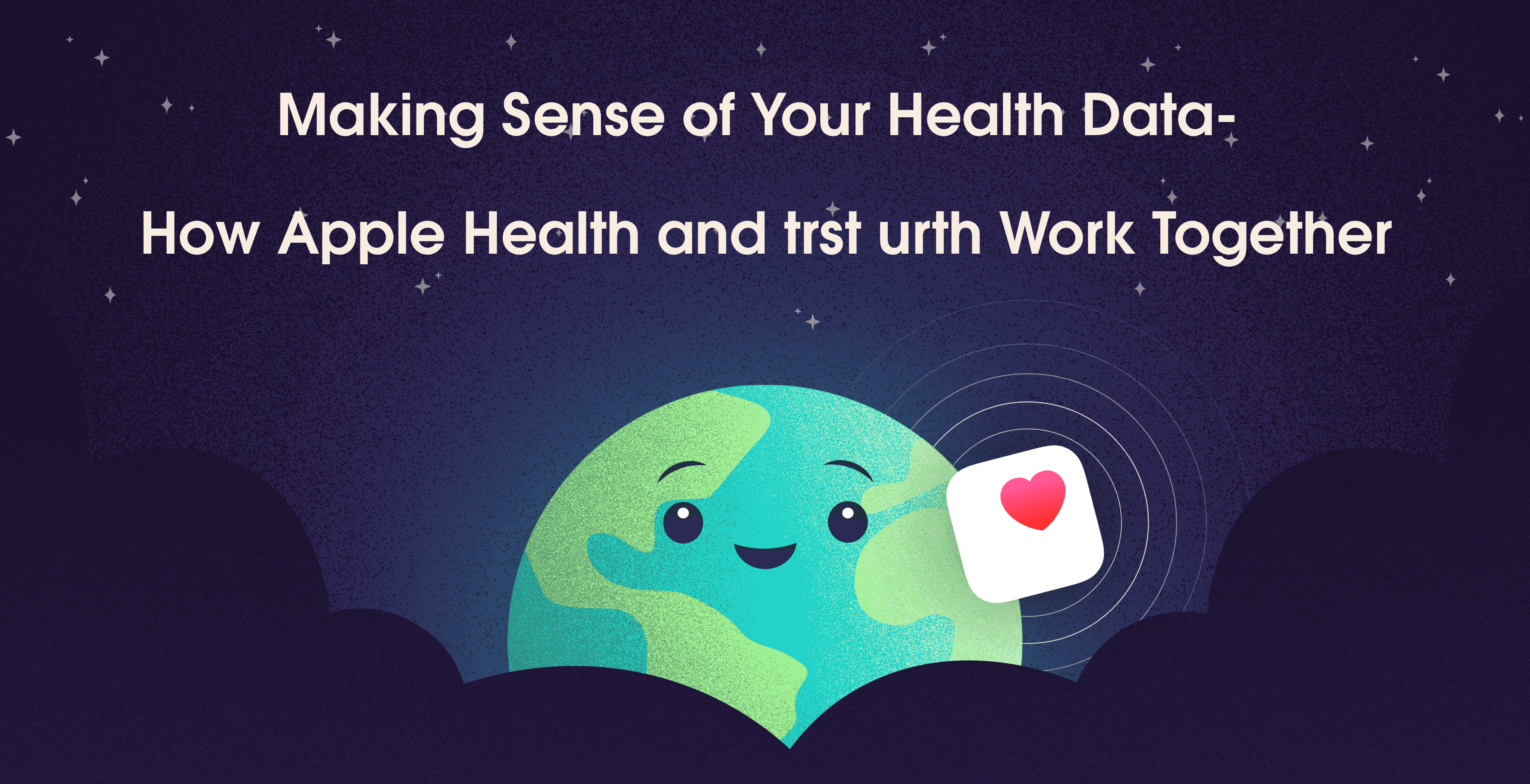

Feb 3, 2025
Aparna Hurtis
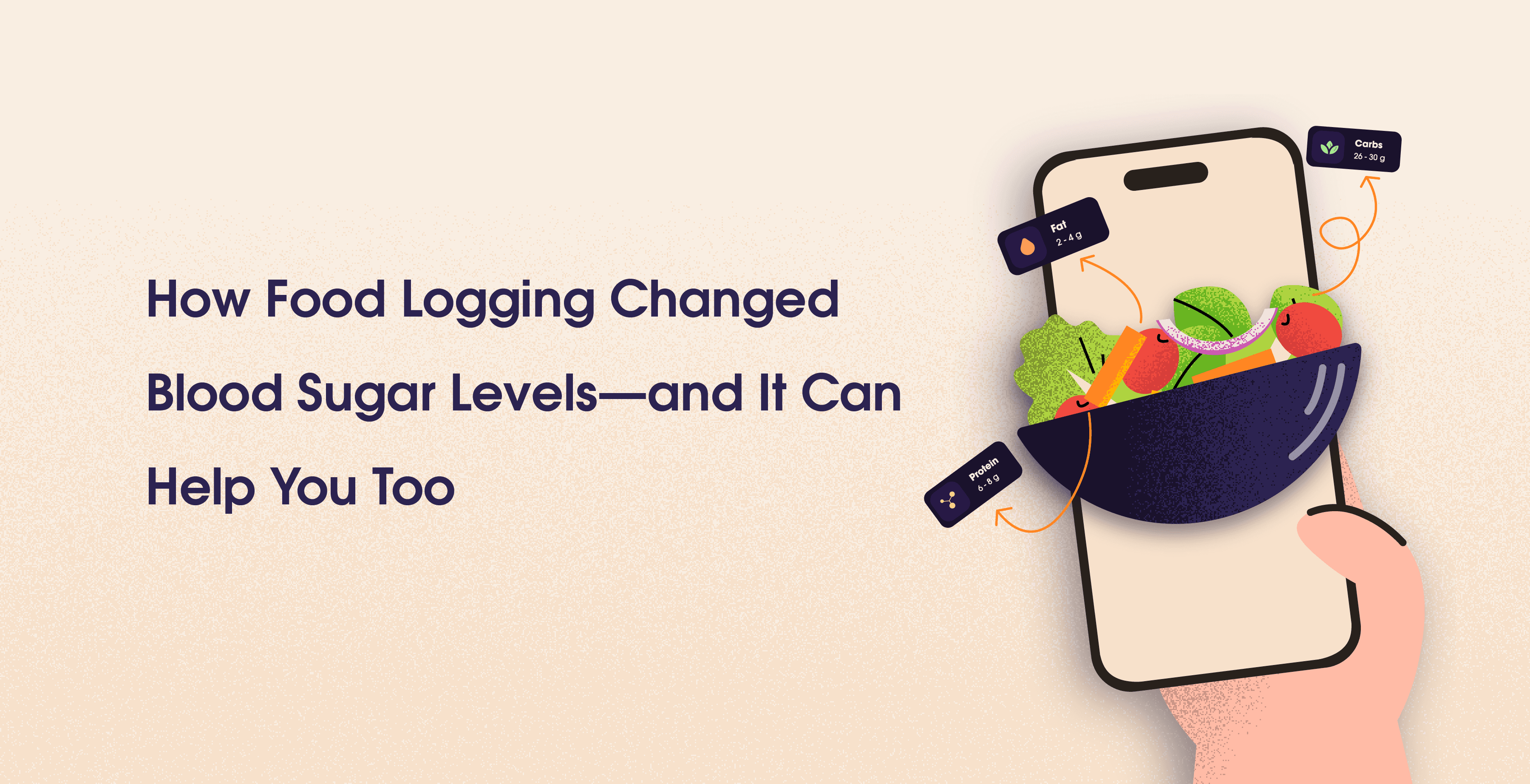

Oct 16, 2024
Sayfali Rawlani
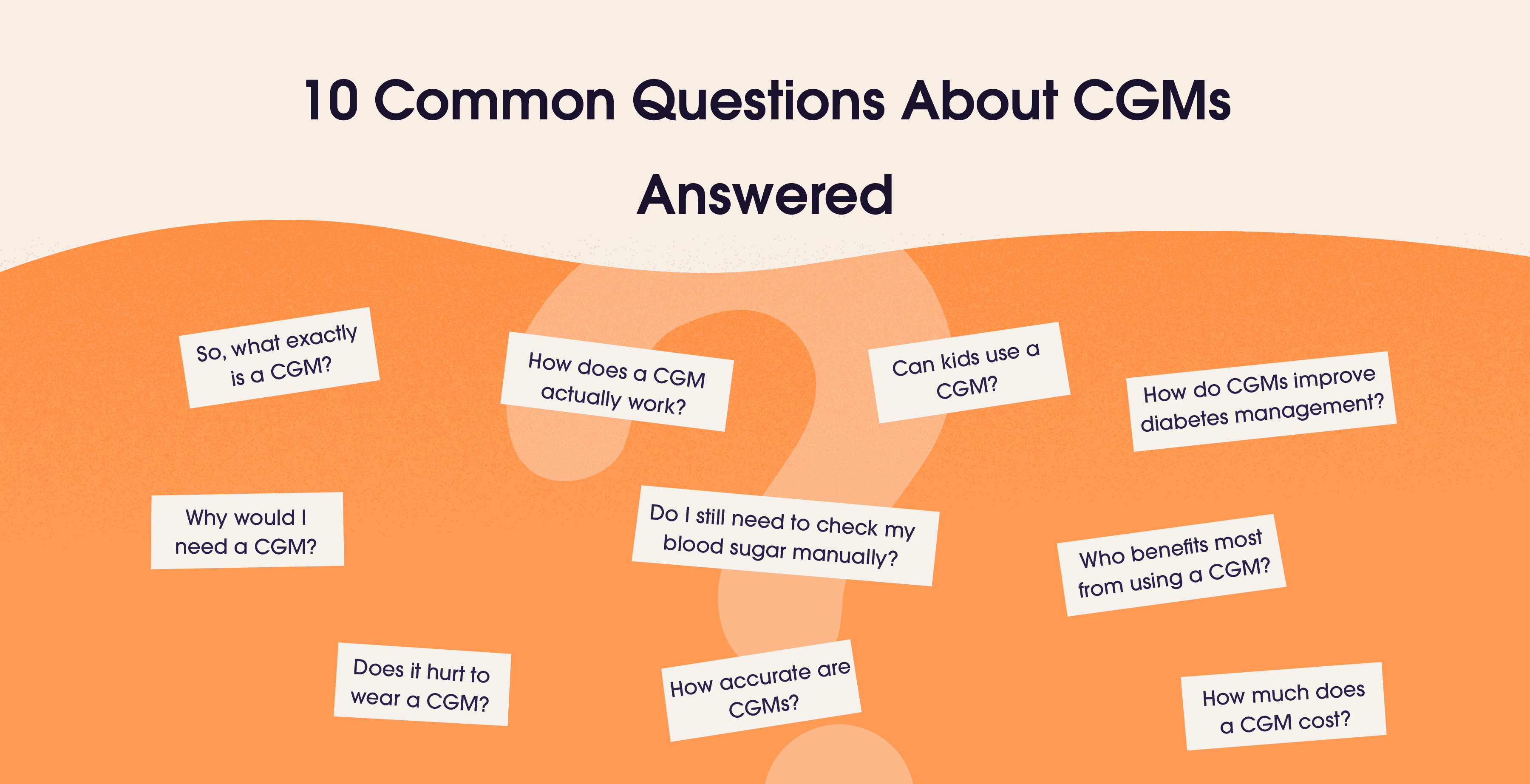

Oct 9, 2024
Sayfali Rawlani



Company
Copyright © 2025 trst health. All right reserved.

